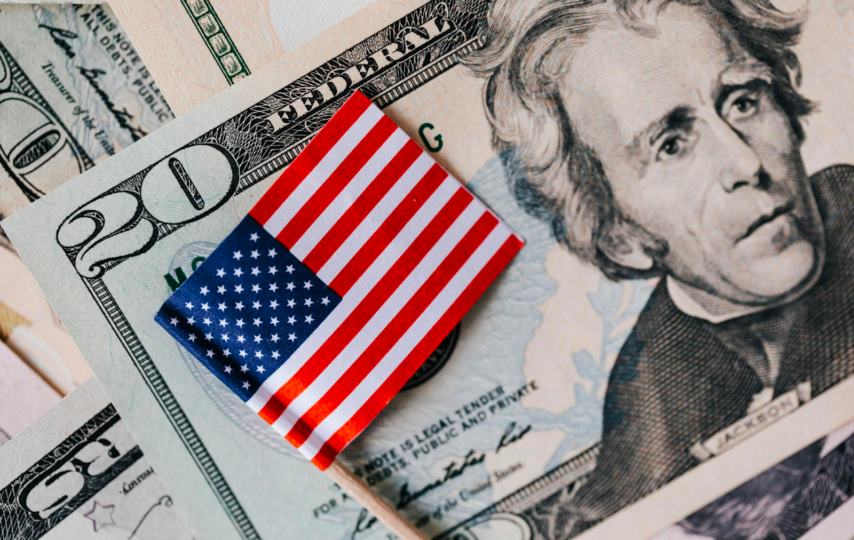Traders and investors in the currency and commodities markets continuously seek insights to predict the U.S. dollar’s movement. Similar to how stock traders rely on various indicators to gauge a company’s performance, several economic reports provide valuable foresight into the U.S. dollar’s potential trajectory.
The Art of Fundamental Analysis
The fundamental analysis is a tool that helps you measure the distance between where you are and where you want to be, financially speaking. It’s the key ingredient in building a successful forex trading strategy. It involves sifting through various data points to understand the bigger picture of your investment. But remember, the financial sea is ever-changing.
A data point that steers you in one direction today might lead you somewhere completely different tomorrow. For example, in times of economic growth, you might be on the lookout for signs of inflation, while in a downturn, consumer spending trends could be your guiding star. That’s why it’s crucial to have a broad set of reports at your disposal when plotting the course for the U.S. dollar. This approach makes sure your forex trading strategy is on point, giving you the insights you need to navigate these changing tides.
Highlighted below are some critical macroeconomic indicators. It’s important to note that the actual figures often matter less than the trend (whether it’s up or down) and how they compare against expectations. Positive surprises can bolster the currency, while negative surprises can lead to depreciation.
Charting the Course with Key Indicators
Are you ready to spotlight some of the most pivotal reports that act as beacons for currency and commodity traders?;
- Trade Balance: A Tale of Imports and Exports
Imagine the U.S. as a giant store. The trade balance tells you if the world is buying more from this store than it sells to it. A trade deficit means the U.S. is buying more from abroad than it sells, which isn’t great news for the dollar. It’s like saying, “Hey, we need more foreign currency to shop overseas!” On the flip side, a trade surplus is like a vote of confidence from the world, boosting the dollar. This report, crafted by the Bureau of Economic Analysis and the U.S. Census Bureau, lands about five weeks after the month ends, offering a peek into the nation’s shopping list.
- Nonfarm Payroll: The Job Market’s Pulse
Jobs are the economy’s heartbeat. The nonfarm payroll report, courtesy of the Bureau of Labor Statistics, monitors the rhythm, counting the beats—aka jobs added or lost. A strong, steady beat (job growth) might prompt higher interest rates, attracting investors like bees to honey, sweetening the deal for the dollar. But a faltering beat (job losses) can lead to lower interest rates and waning interest in the dollar. This report makes its grand entrance on the first Friday after the month wraps up.
- Gross Domestic Product (GDP): The Economy’s Scorecard
GDP is like the scoreboard of the country’s economic game, tallying the value of all goods and services produced. When the score goes up, it’s usually a sign that the economy is in good shape, potentially leading to higher interest rates and a stronger dollar. If the score dips, the dollar might follow suit. This vital stat is released by the Bureau of Economic Analysis about a month after each quarter ends.
- Retail Sales: The Consumer Confidence Report
Retail sales give you a glimpse into the shopping habits of Americans. Think of it as a confidence meter. When people are spending cheerfully, it suggests the economy is robust, which can spell good news for the dollar. This snapshot is taken by the Census Bureau and the Department of Commerce and shared with the world around the middle of each month.
- Industrial Production: The Factory Report
This report is the story of the country’s factories, mines, and utilities. It measures how much stuff they’re churning out. When production is up, it’s a sign that the economic engines are humming, likely giving the dollar a lift. The Federal Reserve Board drops this update around the 15th of each month, covering the production tales of the previous month.
Beyond the Horizon: Other Factors at Play
The journey doesn’t end with these reports. The sea of finance is vast, with other currents and winds affecting the dollar’s direction. Government policies, geopolitical stability, tax changes, and even events overseas can sway the dollar. For instance, a stable government and favorable policies can anchor the dollar’s strength, while international unrest can send it sailing in unpredictable directions.
Final Thoughts
As you’ve charted the course through the economic indicators and reports, remember, each piece of data is a star guiding you through the financial night. While the trade balance, nonfarm payroll, GDP, retail sales, and industrial production reports shine brightly in the sky, they’re part of a larger constellation. The savvy investor, like a skilled sailor, knows to read these signs while staying alert to the changing winds and tides of global events and policies.
In the grand scheme of things, investing in the U.S. dollar—or any currency, for that matter—is a voyage fraught with uncertainties but also ripe with opportunities. By keeping an eye on these key indicators and staying informed about the broader economic landscape, you can navigate these waters with confidence, ready to catch the favorable winds that will propel your investments forward.








